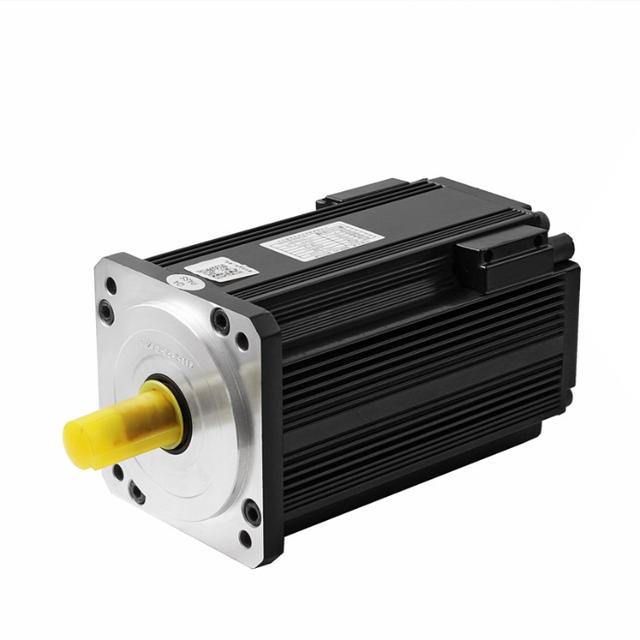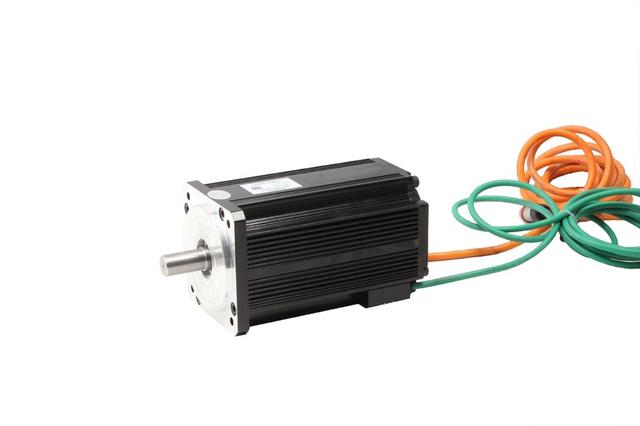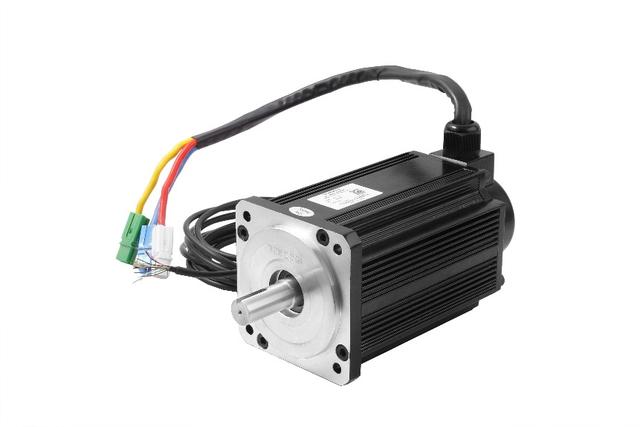The servo motor can control the speed and position accuracy very accurately, and can convert the voltage signal into torque and speed to drive the control object. The rotor speed of the servo motor is controlled by the input signal and can respond quickly. It is used as an actuator in an automatic control system, and has the characteristics of small electromechanical time constant, high linearity, and starting voltage, which can convert the received electrical signal Angular displacement or angular velocity output on the motor shaft. Servo motors are mainly divided into two categories: DC and AC servo motors. The main feature is that there is no rotation when the signal voltage is zero, and the speed decreases at a uniform speed as the torque increases.
Servo motors are divided into AC servo motors and DC servo motors. They are widely used in the electromechanical industry, but many people can’t tell the difference between them. Let’s introduce them below.
One: Comparison of basic structure of AC servo motor and DC servo motor
 The structure of an AC servo motor is similar to that of an AC asynchronous motor. There are two excitation windings Wf and control winding WcoWf with phase space displacement of 90° electrical angle on the stator, connected to a constant AC voltage, and using the AC voltage or phase change applied to Wc to achieve the purpose of controlling the operation of the motor.
The structure of an AC servo motor is similar to that of an AC asynchronous motor. There are two excitation windings Wf and control winding WcoWf with phase space displacement of 90° electrical angle on the stator, connected to a constant AC voltage, and using the AC voltage or phase change applied to Wc to achieve the purpose of controlling the operation of the motor.
The structure of a DC servo motor is similar to that of a DC motor.
Motor speed n=E/K1j=(Ua-IaRa)/K1j, where E is armature back electromotive force, K is constant, j is magnetic flux per pole, Ua and Ia are armature voltage and armature current, Ra is Armature resistance, changing Ua or changing φ, can control the speed of the DC servo motor, but generally the method of controlling the armature voltage is adopted. In the permanent magnet DC servo motor, the field winding is replaced by a permanent magnet, and the magnetic flux φ is constant. .
2: Comparison of advantages and disadvantages of DC servo motor and AC servo motor
 (1) Advantages and disadvantages of AC servo motor
(1) Advantages and disadvantages of AC servo motor
Advantages: good speed control characteristics, smooth control in the entire speed zone, almost no oscillation, high efficiency of more than 90%, low heat generation, high-speed control, high-precision position control (depending on the encoder accuracy), stable operation, Good controllability, fast response, high sensitivity, and strict non-linearity indicators of mechanical characteristics and adjustment characteristics. In the rated operating area, it can achieve constant torque, low inertia, low noise, no brush wear, and maintenance-free (suitable for dust-free and explosive environments).
Disadvantages: The control is more complicated, the driver parameters need to be adjusted on-site to determine the PID parameters, and more connections are required.
(2) Advantages and disadvantages of DC servo motor
Advantages: precise speed control, hard torque and speed characteristics, simple control principle, good linear regulation characteristics, fast time response, convenient use, and low price.
Disadvantages: brush commutation, speed limit, additional resistance, and wear particles (not suitable for dust-free and explosive environments)
From the above comparative analysis, we can clearly know what are the advantages and disadvantages of DC servo motors and AC servo motors. Such analysis can help us more accurately know how to choose a motor and let our work reach the ideal state.
Post time: Jan-13-2021
